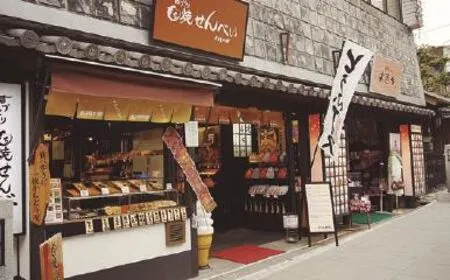CHERRY TREES BY THE SEA
2017-04-10Fengying,CFP
CHERRY TREES BY THE SEA
Spring is the season for cherry blossoms. Different from other cherry spots in Japan, in Seto Inland sea, you can not only enjoy the view of early cherry blossoms, but also take a look at the wonderful seascape and feel the authentic Japanese culture and customs. The cherry blossoms, like lumps of pink clouds, are floating with the wind down to the ground, or falling into the river, even swimming across the coastline and dropping among the waves.
Text &photos by Fengying & CFP
海边的樱花树
春天是樱花盛开的季节,有别于日本其他的赏樱胜地,在濑户内海,不仅可以欣赏早樱,还可以欣赏风光旖旎的海景,感受纯正的日本民俗风情。一树树的樱花,仿佛一团团粉红的云彩,随着轻风落在土地上,落在河流里,甚至飘越了海岸线,落进了汹涌的大海。
The cherry blossom season in Seto
For many Chinese tourists, Seto Inland sea in Japan is not yet familiar; however, it is a popular tourist destination for Japanese and honored as“The Heritage for the future”. In Seto, the pure Japanese traditional culture is kept well. Along the street in Seto, there are all kinds of village operas, ritual ceremonies, which look like frames of Japanese genre paintings.
Three counties in Seto Inland Sea——Hiroshima, Yamaguchi and Ehime are full of fl owering cherry trees, natural and unsophisticated fi shing villages and old castles. When early cherry blossoms embrace spring, you can take a leisurely walk round the lakeshore full of cloud-like cherry petals. Or you can also take some wine with you, sitting down under the cherry tree, enjoying the view and wine, dancing and singing. Walking across the cherry forests till the seaside and watching the colorful petals fl oating over the sea and the clouds immersing the forests, it's like crashing into a wonderland.
I wander along the street and enter a random restaurant. The host is in kimono, taking quick short steps to me and makes a tea carefully and honestly. Putting on a kimono is a very complicated process—clothes, belts, pockets and so on. Every step has a strict rule, representing the inheritance and following of tradition. But in Seto, wearing kimono to streets can not be more normal. Regardless of the view, the people or the stories here, they are all kept within the authentic Japanese tastes.




Cruising around Seto
Enjoying the fl owers by cruise ship is a special experience. There are a lot of islands in Seto Inland sea. The view of both sides is a little similar to Sanxia in China, and there are also three bridges in Inland sea— Akashi Kaikyo Bridge, Seto Bridge and Tatara Bridge. They are all very famous and grand bridges over the sea. Our cruise ship, Venus Pacifi c, is a high-end ship with complete facilities, which makes our cherry voyage very cozy.
Besides the view on sea, the tourists can also step out of the ship to see some interesting places on the way. One of the stops that cannot be missed is Matsuyama. Matsuyama belongs to Ehime, faced against Iyo-Nada of Seto Inland Sea; it's also the biggest city in Shikoku. The tram in Matsuyama, which is also called “Dangdang tram“, looks alike a matchbox. It's orange and with wooden seats in velvet covers in it, and the drivers are in old-fashion uniforms—somehow you will get an illusion of time traveling. Taking “Dangdang tram“ you can get to anywhere in the city, but you must go Dogo Onsen. It was built in 1894 and was the fi rst public bathroom issued as an important historical site. There is a watchtower on the roof; the drum hits three times everyday. The sound of drum hovers around the city for a long time.
Takamatsu and Himeji are rather more famous. In the 17th century, in Edo Period, Takamatsu city was fl ourishing and owned by Matsudaira Family. The historical sites kept in good situation till today are important motifs of Japanese paintings. Moreover, Takamatsu is also the birthplace of Udon. There is an Udon school in Takamatsu, where the tourists are allowed to learn the making of Udon and have a taste. The castle in Himeji, which is listed into the World Heritage List, was built in the middle of 14th century and then later in 16th century, the military offi cer Toyotomi Hideyoshi gave an order to build a 3-storey watchtower, Osaka Castle. The watchtower has a beautiful and elegant shape. It looks like an egret spreading its wings. So Himeji is also called the city of egret. In 1931, it became the national treasure; then in 1993, it was added into the World Heritage List by the UNESCO. All kinds of activities are held in Himeji all round year— Cherry Blossom Festival and Peony Festival of Senhime in spring, Harbor Festival in Summer, Mid-Autumn Festival and Exhibition of Ceramics in Winter, making this city immersed into a sense of culture and history.


濑户的樱花季
对很多中国游客来说,日本濑户内海还是一个陌生的地方,但她却是日本人自己的旅游胜地,被誉为“留给未来的遗产”。濑户地区都保持着纯正的日本传统,各式社戏、祭祀,巡街而过,感觉犹如一幅幅纯粹的日本民俗风情画。
濑户内海的广岛、山口、爱媛三县,有满山遍野的樱花、纯朴自然的渔村和据险而建的旧城堡。早樱迎春而开时,可以围着“长堤十里花如云”的湖堤信步一圈,也可以携酒带肴在樱花树下席地而坐,赏樱畅饮,唱歌兴舞。穿过樱花林走到海岸边,看着海上飘荡着的各色樱花,看着白云在半山腰的樱花林交汇于一起,仿如堕入梦幻的仙境。
漫步在街头,随意走入一间饭店,饭店老板娘穿着和服,踩着碎步,恭敬、小心、亲切地沏茶。穿戴和服是一件复杂的工程,穿衣、别腰带、系布袋等,每一个步骤都有严格的要求,体现着对传统的传承和延袭。而在濑户内海地区穿和服上街,是一件再正常不过的事情。这里无论是景物还是人事,都保持着纯正的日本味道。
跟着邮轮游濑户
乘坐邮轮是一种比较特别的赏花方式。濑户内海有许多岛屿,两边风光有点像中国的三峡,且内海又有三座大桥——明石海峡大桥、濑户大桥、多多罗大桥,都是世界著名的海上大桥,非常雄伟。我们乘坐的维纳斯太平洋号是一艘中高档邮船,设施齐全,让海上的赏花之旅非常舒心。
除了海上观景,人们还可以下船去参观沿途的名胜,其中一个不容错过的邮轮经停点是松山。松山属于爱媛县,面对濑户内海的伊予滩,是四国最大的城市。松山的电车,当地人称为“当当电车”,车外形像火柴盒,橘红色,车内有天鹅绒外套的木制座椅,驾驶员穿着过去年代的制服,让人有时间穿越的错觉。乘坐“当当电车”可以很方便地游览松山市各处景点,道后温泉本馆是必去的一站。它修建于1894年,是第一个被指定为重要文物的公共浴场,屋顶有被称为振鹭阁的望楼,望楼上的“刻太鼓”每天早中晚击打三次,鼓声在温泉之乡久久回荡。

高松市和姬路市更是名声赫赫的旅游地。在17世纪江户时代,高松作为松平家族的“城下町”(以诸侯的居城为中心发展起来的城镇)繁盛起来,现在保留着的许多名胜古迹,都是日本画中重要的表现内容。它又是乌冬面的发源地,当地有乌冬面学校,游客可进去学一学,吃一碗自己做的乌冬面。而被列入《世界遗产名录》的姬路城,是姬路市内的一座城堡,建于14世纪中叶,并在16世纪由武将丰臣秀吉下令建造了三层的望楼“天守阁”。它形态优美,被比喻为展翅的白鹭,故也称白鹭城。1931年它被指定为日本国宝,1993年被联合国教科文组织评为世界文化遗产。围绕着姬路城一年四季都有活动,春季有赏樱会、千姬牡丹节,夏天有 “港口节”,秋天有赏月会,冬天有陶器展等,充满了历史与文化的气息。
Seto Inland Sea
It is located among Honshu, Kyushu and Shikoku. It has an area of 9500 square kilometers and is formed due to the sinking of land and saline intrusion. Seto Inland Ses has a zigzag coastline, with different sizes of islands among the sea. Thus, it's also called“Sea with multiple islands“. The main cities in Seto Inland Sea are Hiroshima, Shimonoseki, Okayama, Matsuyama, Takamatsu etc.
濑户内海
濑户内海介于本州、九州、四国之间,面积约9500平方公里,由陆地下沉海水入侵而形成。海岸线曲折,大小岛屿星罗棋布,号称“多岛海”。濑户内海地区主要城市有广岛、下关、冈山、松山、高松等。
